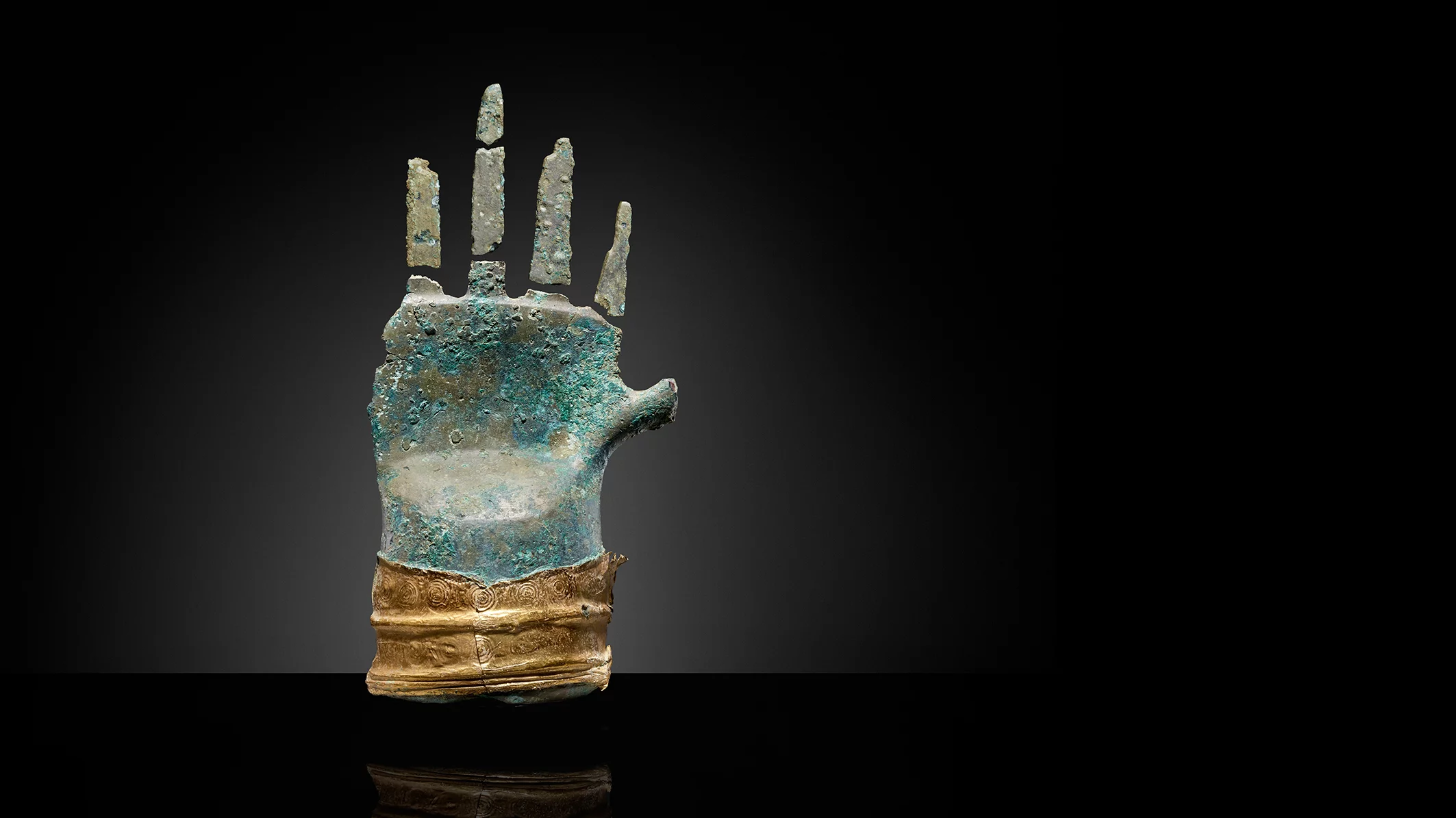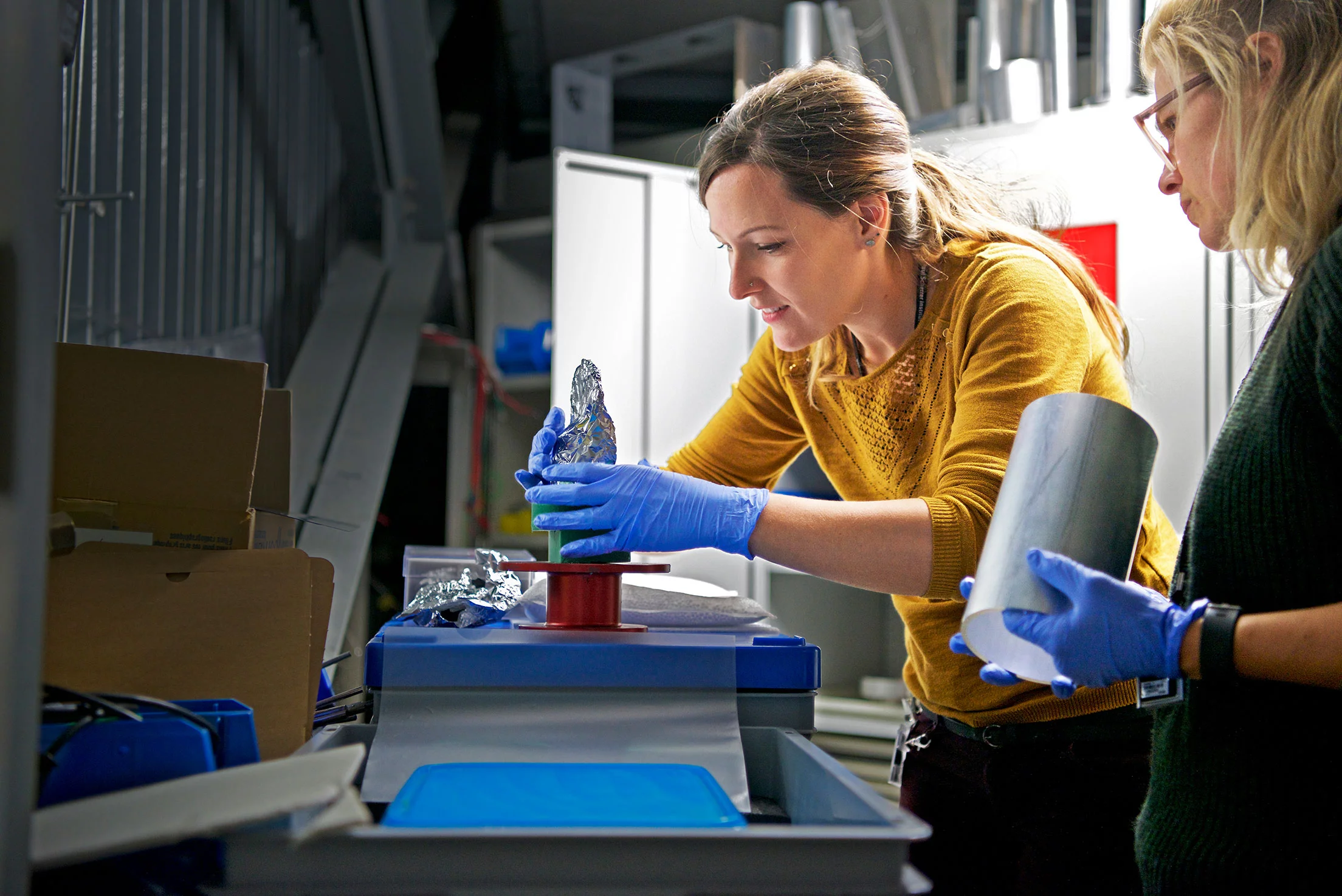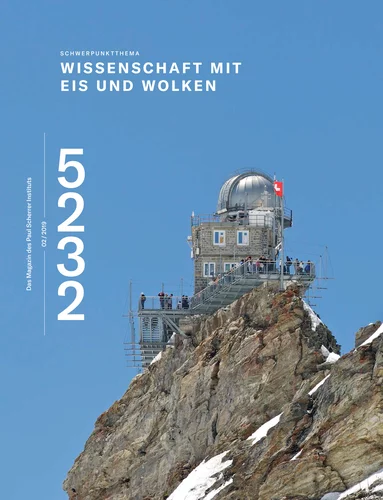A 3,500-year-old bronze sculpture is being examined at PSI's SINQ neutron source. This will enable conservators to get a unique view into the interior of the sensational find – and gain insights into how it was made.
Protected by polystyrene pillows, packed in an air- and temperature-insulated box, transported in the padded cargo space of a car, it arrives at PSI on a Monday in October: the sculpture of a hand, fashioned out of bronze and coated with gold, an estimated 3,500 years old. Two amateur archaeologists dug it up in the fall of 2017 in the Bernese Jura.
Now Sabine Brechbühl and Carole Schneider, from the Archaeological Service of the Canton of Bern, are bringing the historical object to the Paul Scherrer Institute. At the entrance to PSI's SINQ neutron source, they are greeted by PSI researcher David Mannes. Then three boxes are carefully carried through the narrow corridor to the SINQ measurement station NEUTRA: In addition to the hand and its broken-off fingers, a dress pin and a dagger from the same discovery site are to be illuminated at the neutron facility.
Mannes, who studied forestry science and used neutron measurements at PSI in his doctoral research, normally investigates materials and processes from industry and basic research: batteries, fuel cells, or freezing processes. A few years ago, however, archaeologists discovered neutron radiography. Worldwide, there are only around a dozen facilities where this can be done; in Europe, apart from SINQ, there are only four other facilities with this capability.
Metals are nearly transparent to neutrons. "Hydrogen atoms, on the other hand, show up especially clearly in neutron imaging. Objects that contain hydrogen, such as organic material or metal corrosion, can therefore be easily distinguished", Mannes explains. A few months ago, he illuminated a 15th-century Buddha statue with neutrons. The resulting image showed hidden pieces of wood and dried flowers inside.
Maybe the examination of the bronze hand will also reveal something unexpected. Such an early replica of a human body part is still a mystery to the archaeologists a year and a half after it was found. "It doesn't fit in with the time", Sabine Brechbühl says, "and that's what makes this find so sensational." The classical X-ray imaging at the Bernese Archaeological Service produced only a fuzzy picture. "If we now use neutrons to examine the structure of the hand, we hope we will be able to see how it was made", Brechbühl says. She is particularly excited about an adhesive she discovered on the gold surface while she was cleaning the hand. "It must be a natural resin."
If we use neutrons to examine the hand, we hope we will be able to see how it was made.
If the conservators are unlucky, however, the measurement will be over before it has begun. First, as a test, David Mannes will illuminate the bronze hand with the neutron beam for ten seconds. Then it can be determined whether or not the neutron beam will make some of the atoms in the object radioactive. "If there is a lot of silver in it, it could be tricky", Mannes says. "Cobalt would be even more difficult." In that case, if as planned an all-round tomography series of 375 images is made, the hand would have to stay in the vault at SINQ until the radioactivity has subsided. For that reason, a Roman bust from the archaeological site in Avenches had to be stored at SINQ for several months. But clearly, the conservator Brechbühl would rather not do without the bronze hand that long.
The half-life is decisive
Brechbühl pulls on laboratory gloves and carefully wraps the sculpture with aluminium foil to protect it from particles of the foam – the kind that is used for floral arrangements – which in turn cushions the bronze hand in a cylindrical container. She turns down, for now, an offer by newly arrived PSI technician Jan Hovind to carry the cylinder to the measurement station. As head of the division specialising in metallic objects at the Archaeological Service of Bern, she is responsible for the object. There are often fragile places on ancient artifacts, Brechbühl explains. "Something can quickly break off." Mannes admits: "Sometimes, the archeologists and we speak different languages." But over time, the PSI scientists have learned to understand the language of the archaeologists. In some years, they examine dozens of historical objects, so they know a lot about historical materials and often handle the objects themselves. In turn, many conservators are now familiar with the method of neutron radiography.
At the NEUTRA measurement station, the PSI team takes over. Mannes sits at a computer outside the experiment zone, which is shielded by thick concrete walls, and sets the camera focus by remote control. A still picture reminiscent of an X-ray image appears on his screen. Then he smiles. "Ready."
Carefully, Sabine Brechbühl carries the cylinder into the experiment station. After she has stepped out again between the concrete walls, the door to the zone is shut. Soon after, a first neutron-beam image of the bronze hand appears on the screen: an outline with shading, brighter in some places, dark in others. The latter could indicate corrosion, Mannes says. But first, what's important now is what Radiation Protection has to say.
As a small procession with the cylinder, Mannes, Schneider, and Brechbühl cross the SINQ hall to the Radiation Protection room, where Marco Müller is waiting in a white lab coat. "This can take a few minutes now", Müller says, after Brechbühl has deposited the cylinder in the concrete radiation chamber. But seconds later, blue lines come out on his computer screen: the metals whose radiation has been detected by the measuring instrument. Identifying them, the radiation protection technician Müller says: "Gallium." At the periodic table on the back wall, he reads off the half-life value: The radiation intensity diminishes by half every nine hours – a comparatively low value, and thus no problem. The manganese and copper too are fine, as is the thin coating of gold. Müller nods. "You should be able to take the hand back in three weeks."
From the same casting?
After a short sandwich break, the hand goes back into the beam chamber; the next day the fingers and the dress pin will get their turn. In the meantime, Brechbühl has become more trusting: David Mannes is allowed to carry the cylinder himself.
In the end, the result of the neutron tomography has a surprise in store for Sabine Brechbühl: "It looks as if the hand was made in a single casting", she explains a few days later by telephone. "That would be astounding for this era."
There is one small disappointment, however: In the neutron images, there is nothing to be seen of the adhesive. "Either it was only used on the edges", Brechbühl says, "or maybe the organic material has already decomposed. We don't know." For the time being, the 3,500-year-old hand is still keeping some of its secrets.
Text: Joel Bedetti



